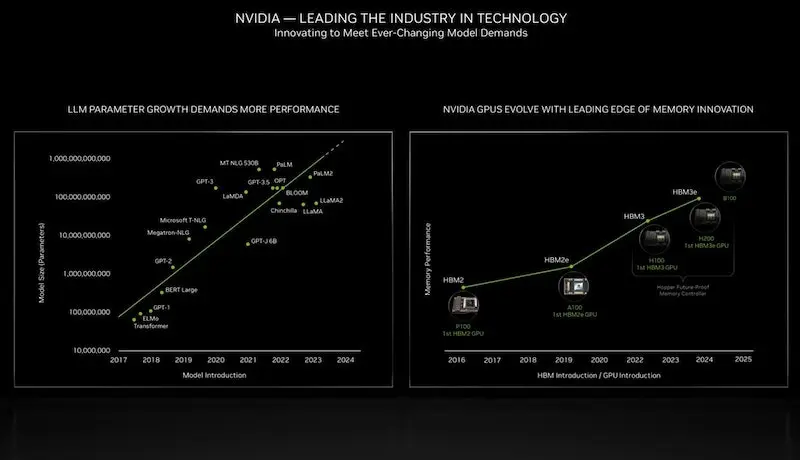GeForce RTX 50 series flagship GPU will switch to GDDR7
Last year, Ian Buck, Vice President and Chief Accelerated Computing Officer at Nvidia, reaffirmed the company’s commitment to updating its principal GPGPU architecture every two years. He confirmed that the Blackwell architecture GPU is set to launch in 2024, initially targeting data center products, with GeForce graphics cards following in 2025.

Recently, there have been rumors that the flagship GeForce RTX 50 series GPU will transition from GDDR6X to GDDR7 memory, although the memory bus width will remain at 384 bits, contrary to earlier speculations of 512 bits. Samsung has reportedly completed the development of the industry’s first GDDR7 chip, boasting a data I/O interface speed of 32Gbps. The inaugural 16Gb GDDR7 chip, under a 384-bit bus width, is expected to deliver an impressive bandwidth of up to 1.536 TB/s.
Previous discussions suggest that the GeForce graphics cards based on the Blackwell architecture will feature five chip models: GB202, GB203, GB205, GB206, and GB207. A notable departure from past designs is the absence of a GB204 model following AD104, replaced instead by the GB205 model. Furthermore, the GeForce RTX 50 series is anticipated to adopt the PCIe 5.0 interface. The top-tier model, based on the GB102 chip, is likely to possess 192 Streaming Multiprocessors, amounting to 24,567 CUDA cores, with an L2 cache of 128MB. There’s also speculation that it might be manufactured using TSMC’s 3nm process.
Rumors indicate that the Blackwell architecture GPU for the GeForce RTX 50 series will maintain a single-chip design, with Multi-Chip Module (MCM) packaging reserved for data center products. Although the Blackwell architecture isn’t an entirely novel design, Nvidia is expected to implement substantial modifications. The SM and CUDA are set to feature a new structure, and it’s plausible that the RT units might be replaced by PT units, aiming for further optimization and enhancement of ray tracing capabilities.





